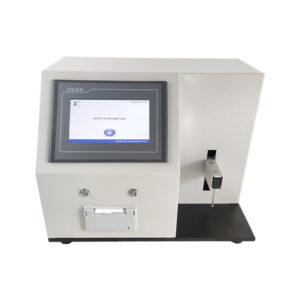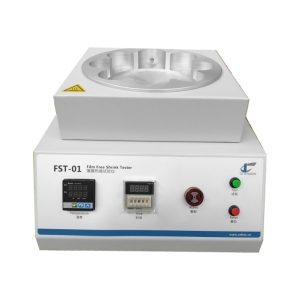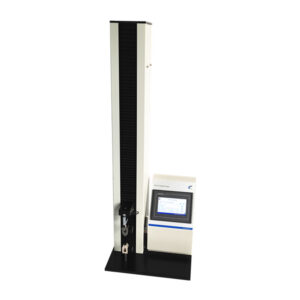Giới thiệu
The Mop Push Force Tester is an essential tool for manufacturers of cleaning products, specifically designed to evaluate the push force and friction characteristics of various mop materials. By assessing these parameters, the tester ensures that mops maintain their efficiency and durability over time, making them effective for cleaning applications in homes, offices, and industries. This product description delves into the importance of the mop push force test, the methodologies involved, and the advantages it provides to manufacturers.
Background
Importance of Mop Quality Testing
Given the diverse applications of mop materials, rigorous quality testing is paramount. Mops are frequently used for cleaning kitchen surfaces, windows, and furniture, necessitating high absorbency and durability. Quality testing helps ensure that mops retain their effectiveness, providing reliable cleaning solutions across various environments.
Factors Affecting Mop Performance
Key factors influencing mop performance include friction, absorbency, and overall durability. A well-designed mop should balance these characteristics to optimize cleaning efficiency. Excessive friction can lead to increased labor intensity, while insufficient friction may hamper cleaning effectiveness.
Benefits of Mop Push Force Testing
By utilizing the Mop Push Force Tester, manufacturers can enhance their products’ performance, ensuring user comfort and cleaning efficacy. The test identifies potential issues early in the design process, allowing for adjustments that maintain the reliability and functionality of mops.
Application of Mop Push Force Tester
Primary Uses
The Mop Push Force Tester is specifically tailored for testing various cleaning materials, including microfiber mop pads and sponge mops with foam blocks made from cellulosic, rubber, or plastic. Understanding the friction characteristics of these materials is vital for optimizing their performance.
Influence of Friction on Cleaning Performance
The coefficient of friction (COF) plays a crucial role in determining how effectively a mop can clean surfaces. Excessive friction can make the mopping process labor-intensive, while too little friction may reduce cleaning efficiency. Thus, finding a balanced coefficient is essential for optimal performance.
Industries Benefiting from Push Force Testing
Several industries can benefit from the insights provided by the Mop Push Force Tester, including janitorial services, commercial cleaning companies, and manufacturers of cleaning products. These sectors rely on high-quality mops for effective cleaning solutions, making reliable testing indispensable.
Key Testing Concepts
Mop Friction Test
The mop friction test is a critical component of the Mop Push Force Tester, which evaluates the coefficient of friction (COF) of mop materials. There are two types of COF measured during testing:
- Static COF (µs): This represents the force required to initiate movement between two surfaces.
- Kinetic COF (µd): This indicates the force required to maintain movement once the mop is in motion.
Formula and Measurements
The coefficient of friction is calculated using the formula: COF=Force to move one surface across anotherForce perpendicular to the surfaces\text{COF} = \frac{\text{Force to move one surface across another}}{\text{Force perpendicular to the surfaces}} This quantitative measure is essential for assessing mop performance.
Mop Push Force Test Methodology
Sample Preparation and Placement
To begin testing, the mop cloth sample is securely fixed to its aluminum or plastic frame. This assembly is then positioned under a specified weight to prepare for the test.
Testing Process
The test involves pulling the sample and its frame at a speed of 500 mm/min over a distance of 500 mm. Both static and kinetic coefficients of friction are recorded, providing valuable data on the material’s performance characteristics.
Testing Conditions and Settings
The Mop Push Force Tester offers adjustable testing conditions, allowing manufacturers to customize the speed and weight applied during testing, ensuring accurate results tailored to specific material requirements.
Key Technical Features
Precision and Control
The Mop Push Force Tester is equipped with a PLC-controlled system and an HMI screen for intuitive operation, allowing for precise control over various test parameters.
Adjustable Testing Parameters
Key parameters can be adjusted according to the specific needs of mop materials, including:
- Speed Range: 1-1000 mm/min (with 0.1 mm/min accuracy)
- Force Range: Up to 100N
- Sled Dimensions: 100 x 100 mm
- Sled and Sample Weight: Sled weight of 225g ± 1g, and total sample weight of 520g ± 1g.
Data Accuracy
The high-resolution sensor (0.5%FS) guarantees reliable test results and repeatability, enabling manufacturers to achieve consistent quality control.
Application-Specific Features
The Mop Push Force Tester also supports multiple test modes (up to 5 groups), facilitating a comprehensive analysis of different mop materials.
Advantages of Using the Mop Push Force Tester
Enhanced Quality Control
By providing precise measurements of push force and friction, the Mop Push Force Tester assures product durability and user comfort. This testing enables manufacturers to identify potential issues before products reach the market.
Product Development Support
The tester’s customizable settings aid manufacturers in developing new mop materials and designs, helping to enhance cleaning efficiency and user satisfaction.
Data-Driven Improvements
With detailed quantitative data from testing, manufacturers can refine their product designs, ensuring that they meet or exceed industry standards for quality and performance.
Câu hỏi thường gặp
Q1: What is a Mop Push Force Tester?
A1: The Mop Push Force Tester is an instrument used to evaluate the push force and friction characteristics of mop materials, ensuring their effectiveness and durability.
Q2: How does the friction coefficient affect mop performance?
A2: The friction coefficient influences how easily a mop can move across surfaces; excessive friction makes cleaning harder, while too little can reduce effectiveness.
Q3: What materials can be tested with the Mop Push Force Tester?
A3: The tester is designed to test various mop materials, including microfiber mop pads and sponge mops with foam blocks made from cellulosic, rubber, or plastic.
Q4: Can I customize the test parameters for different mop types?
A4: Yes, the Mop Push Force Tester allows for adjustable parameters such as speed and weight to accommodate different mop materials and testing needs.
Q5: What industries benefit from mop push force and friction testing?
A5: Industries such as janitorial services, commercial cleaning companies, and cleaning product manufacturers benefit from the insights provided by the Mop Push Force Tester for quality assurance and product development.
The Mop Push Force Tester is an indispensable tool for manufacturers aiming to produce high-quality, effective, and user-friendly mop products. By accurately assessing push force and friction characteristics, this tester supports the development of mops that deliver optimal cleaning performance, ensuring reliability in various applications.







